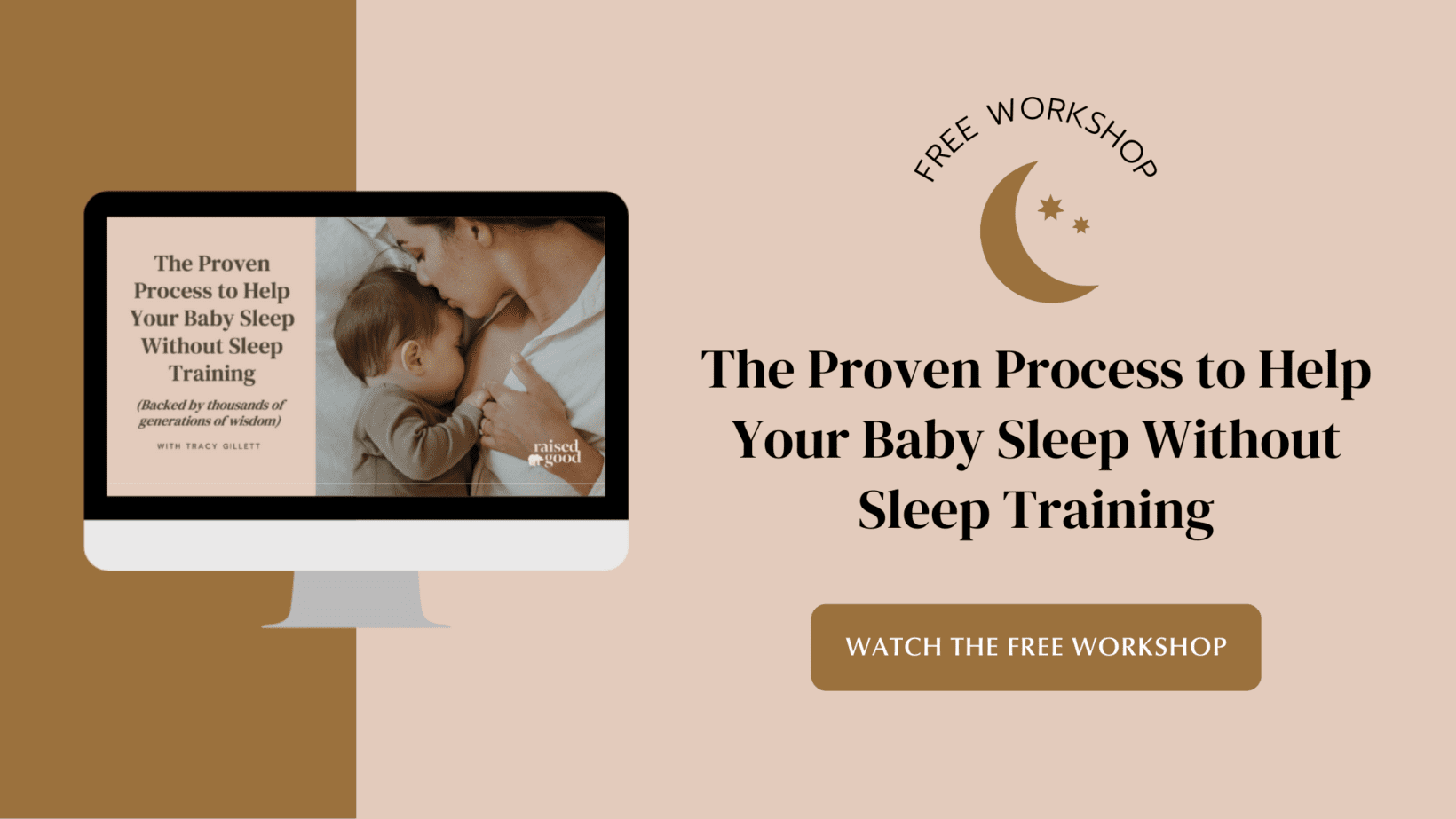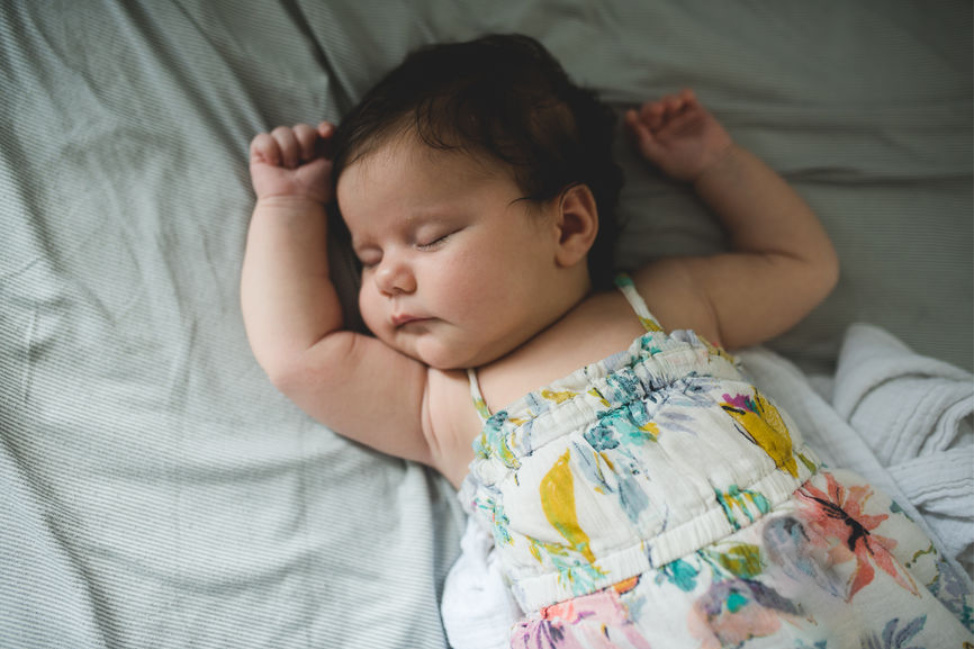The belief that a mother sleeping next to her baby is inherently and unavoidably dangerous permeates our culture.
The idea that mothers’ bodies are lethal weapons.
The notion that sharing sleep with an infant is an accident waiting to happen.
The judgment that parents who share their beds with their babies are irresponsible.
Health authorities in the U.S. have gone so far as to publish shameful advertising campaigns showing babies sleeping next to butcher’s knives, claiming that “Your baby sleeping with you can be just as dangerous”, or images of beds with tombstones for headboards with the inscription “For too many babies last year, this was their final resting place.”
Family doctors and pediatricians perpetuate these myths by failing to educate themselves on which measures make shared sleep safe, which risk factors make it dangerous, and why – in many instances – shared sleep is safer, physically, mentally and emotionally, for the mother-infant dyad.
It’s time to call bullshit when we see it and for the fear-mongering to be recognized for what it is, because these one-size-fits-all policies do not help parents, and they do not save babies. Why not?
Because mothers are being given mixed messages.
We are simultaneously told to sleep in isolation from our babies, while also being told that “breast is best”. To breastfeed exclusively for 6 months and then for at least 2 years.
But, we can’t cherry-pick the parts of our biology that are deemed to be socially desirable and dismiss those that aren’t. We are designed to sleep next to our infants; that is how mothers get the most rest, how breastfeeding is best supported, and how mothers experience the most hormonal protection.
We are, as Dr. James McKenna describes, breastsleepers.
For a new mother to breastfeed successfully, she needs to nurse through the night, which, in the first year and beyond, may mean nursing every two hours.
How can a mother possibly do all the “right” things and stay sane, healthy, functional and non-depressed? How can she maintain solitary sleep, wake up and get out of bed every 2 hours, nurse and settle her baby and then fall back to sleep without becoming completely drained? All without compromising her mental health?
The simple answer is – she can’t.
And so, something has to give.

There are two common outcomes in this scenario.
Firstly, mothers continue breastfeeding and start bedsharing. Probably in secret. Probably with no support. But likely experiencing much more rest than they had been.
Or, mothers sleep separately from their babies. As a result, breastfeeding frequency reduces and exclusive breastfeeding becomes likely to fail as milk supply – for some “unknown reason” – dwindles.
The American Academy of Pediatrics fuels this nonsensical approach to new motherhood by stating that “Infants may be brought into the bed for feeding or comforting but should be returned to their own crib or bassinet when the parent is ready to return to sleep.” But also that “Infants should be fed breastmilk exclusively for the first 6 months after birth.”
These seemingly separate yet inextricably linked statements put babies at risk. Why? Because they often lead to a third, risky scenario.
A new mother is trying desperately to do all the “right” things.
So, night after night, at 12am, at 2am, at 4:30am, she breastfeeds her baby on a sofa, recliner or nursing chair. She is beyond exhausted, but knowing she must return her baby to their crib, she battles to keep her eyes open. Eventually, she can’t stay awake any longer, and she falls asleep with her baby on the sofa. Or the nursing chair. Or she brings her baby into her bed, with every intention of returning her baby to the crib, but accidentally falls asleep.
Yet she never intended to bedshare, so she didn’t learn about safe cosleeping guidelines. She’s never heard of the Safe Sleep Seven. She didn’t know about the potential – but avoidable – dangers of modern adult bedding. She took risks she never meant to take. She put her baby at increased risk for SIDS, strangulation, suffocation, and other terrifying words that make us shift in our seats as we feel physically ill at the thought of them ever being used in the same sentence as our baby’s name.
Of course, we all want our babies to be safe, so it is time for parents to open the discussion and take charge. We do not need permission from an external source to do so.
We need to dismiss unfounded social policies that blind us to the ways in which we can take charge and keep our babies safe at night.
We don’t do it by withholding information or making blanket statements that bedsharing isn’t safe, because that simply isn’t true.
We know from ethnographic data that countries that normalise and educate on safe cosleeping practices experience high rates of bedsharing and low rates of SIDS. For example, Japan experiences bedsharing rates that are among the highest in the world (around 40%), yet deaths due to SIDS are among the lowest (0.16% in 2005). (1)
The Japan SIDS Family Organization reported that SIDS rates continue to decline in Japan as maternal smoking approaches practically zero, and exclusive breastfeeding reaches 70-75%. One Japanese study found that SIDS cases were found to occur more frequently when infants were younger than six months old, at home and sleeping alone. (2)
In the UK, UNICEF reports that approximately 700,000 babies are born each year and that 350,000 of those babies will have slept in an adult bed with one or both parents by three months of age, whether intended or not. In 2016, 219 babies died of SIDS in the UK (0.03% of all births). Data suggests that 50% of SIDS babies die while sleeping in a Moses basket or cot (crib) and that 50% die while cosleeping. However, 90% of the cosleeping babies died in hazardous situations that are preventable, such as sofa-sharing and parental smoking. (3,4,5,6)
Numbers paint a clear picture: the risk of SIDS for all babies in England and Wales is 1 in 3180, while for babies who cosleep with a smoker the risk increases to 1 in 787, and for babies who cosleep on a sofa the risk increases again to 1 in 174.
Neither of these risks should EVER be taken.
Surely, an informed discussion about nighttime parenting and an authentic, science-based approach to reducing nighttime infant deaths should begin with eliminating risk factors, identifying families who should never cosleep and providing alternatives, educating those families who want to cosleep on how to do it safely, while also educating those families who do not intend to cosleep (because we know that 50% of them will at some point anyway).
After all, we don’t tell our kids they can die drowning so NEVER go in the water – we teach our children how to swim, how to read the water, and when necessary, to wear a lifejacket.
It’s time we do the same for nighttime parenting.
Because parents are going to cosleep, no matter how sensationalistic the scare-tactics become, no matter how obvious the anti-cosleeping signs are in maternity wards, no matter how often doctors recommend against it. Exhausted parents are going to fall asleep with their babies in dangerous locations – tonight. Parents will unintentionally put their babies in harm’s way, unless we educate, support and empower parents to keep their own families safe.
So, where can you go to get more information on how to cosleep safely?
Start with The Safe Sleep Seven by La Leche League. They have a wonderful, downloadable handout that highlights the factors that make shared sleep safe. In short, the safe sleep seven say that,
A mother needs to be:
A non-smoker
Sober (no drugs, alcohol, or medications that make you drowsy)
Breastfeeding
A baby needs to be:
Full-term and healthy
Kept on his back when he is not breastfeeding
Unswaddled
Both parents need to be:
On a safe sleep surface
So, what is a safe sleep surface? Click here to read Safe Cosleeping Guidelines by Dr. James McKenna, Mother-Baby Behavioural Sleep Laboratory. This page outlines what parents need to do to modify an adult bed to make it safe to share with a baby.
La Leche League International also have a wonderful page on their site that outlines a Safe Surface Checklist. Click here to read it.
The aim of this post is not to infer that all parents can or should bedshare. It is not to say that ALL cosleeping is safe, because it isn’t. The aim of this post is to shine a light on the fact that we cannot say that all bedsharing is unsafe, because it isn’t.
Doing so only serves to alienate mothers and put babies at risk.
I am the mother of a 5-year-old child. His world is black and white. It is developmentally appropriate that he deals in absolutes. But, unlike children, we have the ability to use our fully formed prefrontal cortex, and, rather than allowing our reptilian brain to hijack logic and reason while shutting down rational conversation, we can calmly look at the facts. We can be curious about our evolutionary history. We can assess ethnographic data. We can perform our own risk assessments – but, we need to know what risks we’re looking for. And then we need practical tools to make our own decisions.
For some parents, the best choice may be room-sharing with a baby in a crib, for others it may be bedsharing on a floor mattress, while for others it may be a sidecar arrangement. But, for none, should it be taking unnecessary risks.
If you are eager to learn more about the science of sleep, check out the Good Science Guides, Sleep Series, a series of six digital guides with bite-sized evidence-based research on topics like night waking, nighttime breastfeeding, SIDS, sleep training and more. I’ve done the tireless research so you don’t have to, and I’m passionate about presenting you with the truth about biologically normal infant sleep so that you can make informed decisions for your family.

REFERENCES
(1) Wendy Trifunov, prepared for The Public Health Agency of Canada. The Practice of Bed Sharing: A Systematic Literature and Policy Review. May 15, 2009
(2) Watanabe, N. , Yotsukura, M. , Kadoi, N. , Yashiro, K. , Sakanoue, M. And Nishida, H. (1994), Epidemiology of sudden infant death syndrome in Japan. Pediatrics International, 36: 329-332.
(3) Office for National Statistics, “Birth Summary Tables, England and Wales: 2016.” https://www.ons.gov.uk/releases/ birthsummarytablesinenglandandwales2016. Accessed June 9th, 2019
(4) Blair, PS & Ball, HL (2004), The prevalence and characteristics associated with parent-infant bed-sharing in Eng- land.” Archives of Disease in Child- hood, 89(12):1106-10.
(5) Office for National Statistics, “Unexplained Deaths in Infancy, England and Wales: 2016.” https://www.ons.gov.uk/ peoplepopulationandcommunity/births- deathsandmarriages/deaths/bulletins/ unexplaineddeathsininfancyenglandan-dwales/2016. Accessed June 9th, 2019.
(6) Blair, PS, Sidebotham, P, Eva- son-Coombe, C, Edmonds, M, Heck- stall-Smith, EM & Fleming, P (2009), “Hazardous co-sleeping environments and risk factors amenable to change: case-control study of SIDS in south west England.” BMJ 339:b3666.

Comments